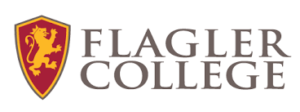
Timothy J. Johnson, Craig and Audrey Thorn Distinguished Professor of Religion at Flagler College, recently discovered a Spanish-Timucua book by the Franciscan Friar Francisco Pareja. The book, previously unknown to scholars, was published in Mexico in 1628.
Pareja and his anonymous Timucua co-editors, authored 130 folios with various woodcut images. The book is permanently housed in the Codrington Library of All Souls College in Oxford, England. The title of the work is, “IIII. parte de catechismo en lengua Timuquana y castellana: En que se trata el modo de oyr Missa, y sus ceremonias,” which translates in English to “Part Four of the Catechism in the Timucua and Castilian Languages, which treats the manner of listening to the Mass and its ceremonies.”
The rare find came when Johnson, on sabbatical for the Fall 2019 semester, had been researching Spanish-Timucua sermon stories from seventeenth century Florida and came across a reference to the book in the Codrington Library. In disbelief of what he was reading, he quickly notified the staff and requested images to verify his hunch. Once the existence of the book was verified, the library offered to make the entirety of the book available online, found here.
Says Johnson of the initial findings: “This discovery is what dreams are made of for people who work with historical documents. This book allows scholars to further explore a pivotal historical period in American history that has been neglected for far too long.”
The native language of most of Northern Florida in the Spanish colonial period was Timucua, and Franciscans began to study this language and teach native people reading and writing at the end of the sixteenth century. Two books published in Timucua in 1612 are the oldest written materials in an indigenous language of the present-day U.S.
The Timucua people were devastated by disease, war, and slavery, and though there are probably descendants, there is no modern Timucua tribe. Because the language is no longer spoken, linguists and historians have been eager to learn as much as possible about the language and its speakers through a small number of published religious materials in Timucua, including catechisms, a confessional, and a doctrina – an explanation of Christian doctrine.
According to Professor George Aaron Broadwell of the University of Florida, who is an expert in Timucua literature and language, “The discovery of this previously unknown book in Timucua is a very rare occurrence. The last discovery of a new item in this language happened in the nineteenth century.”
Broadwell asserts that the study of this book will allow us to better understand the language, culture, and religion of the indigenous Timucua people.
Archeologist Kathleen Deagan of the University of Florida and Flagler College notes, “This discovery is immensely important to our understanding of the church site we are excavating at Mission Nombre de Dios. We can now understand much more about the events and rituals that took place here, and the meaning it had for the people. This is a very rare opportunity for archaeologists.”
The church site excavation is an ongoing archaeological dig which Deagan and Johnson have been involved in for over a year. The area is where Pedro Menéndez came ashore in 1565 and founded the city of St. Augustine.
About Flagler College
Flagler College is a small private, independent college located in St. Augustine, Fla. The college offers 34 majors, 41 minors, and a master’s degree in Education of the Deaf/Hard of Hearing. Flagler College has an enrollment of about 2,500 students, as well as an offsite campus in Tallahassee, Fla. U.S. News & World Report and The Princeton Review regularly feature Flagler as a college that offers quality education at a relatively low cost. A Flagler education is less than half the cost of similar private colleges, and competitive with many state universities. A relatively young institution (founded in 1968), Flagler College is also noted for its historic beauty. The centerpiece of the campus is the former Hotel Ponce de Leon, a National Historic Landmark opened in 1888 by railroad pioneer and Standard Oil co-founder Henry M. Flagler. For more on Flagler College, visit flagler.edu.
